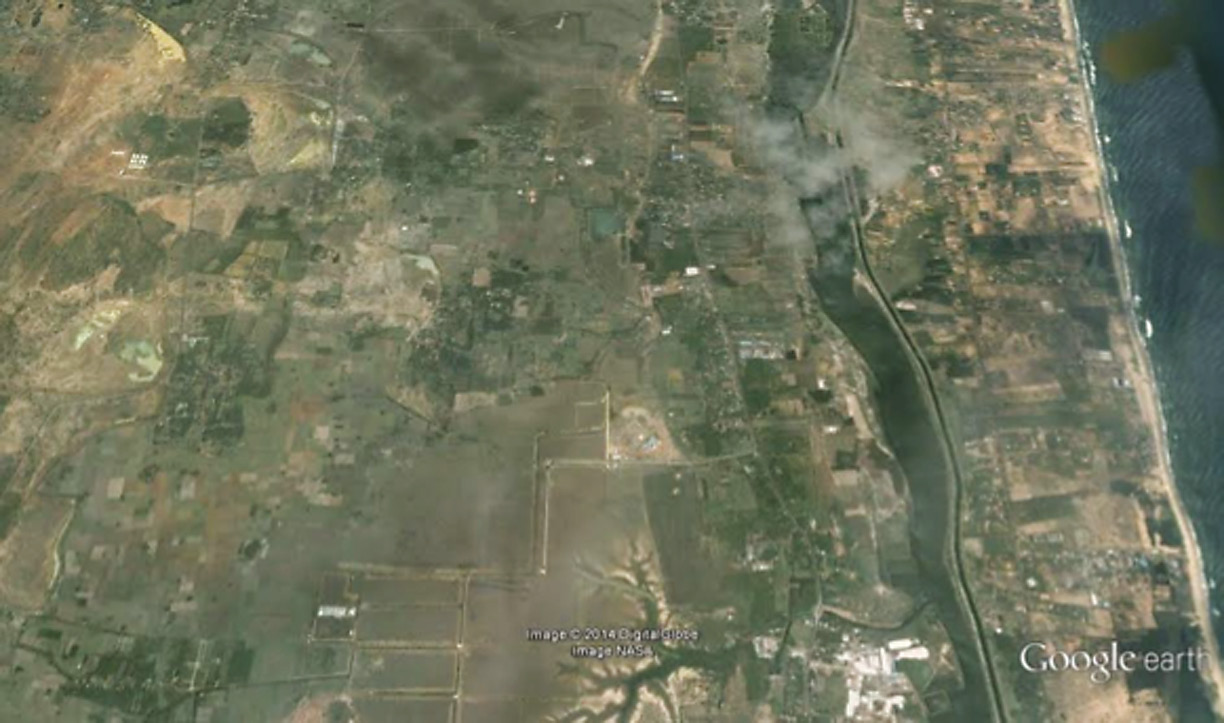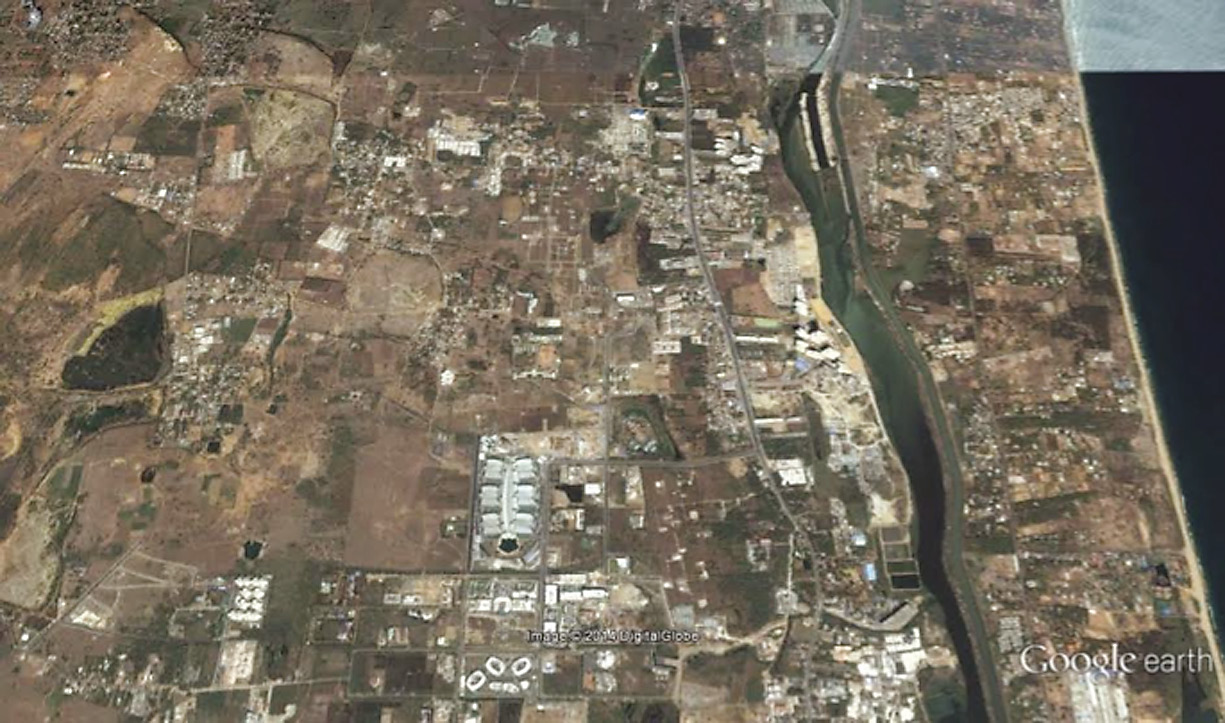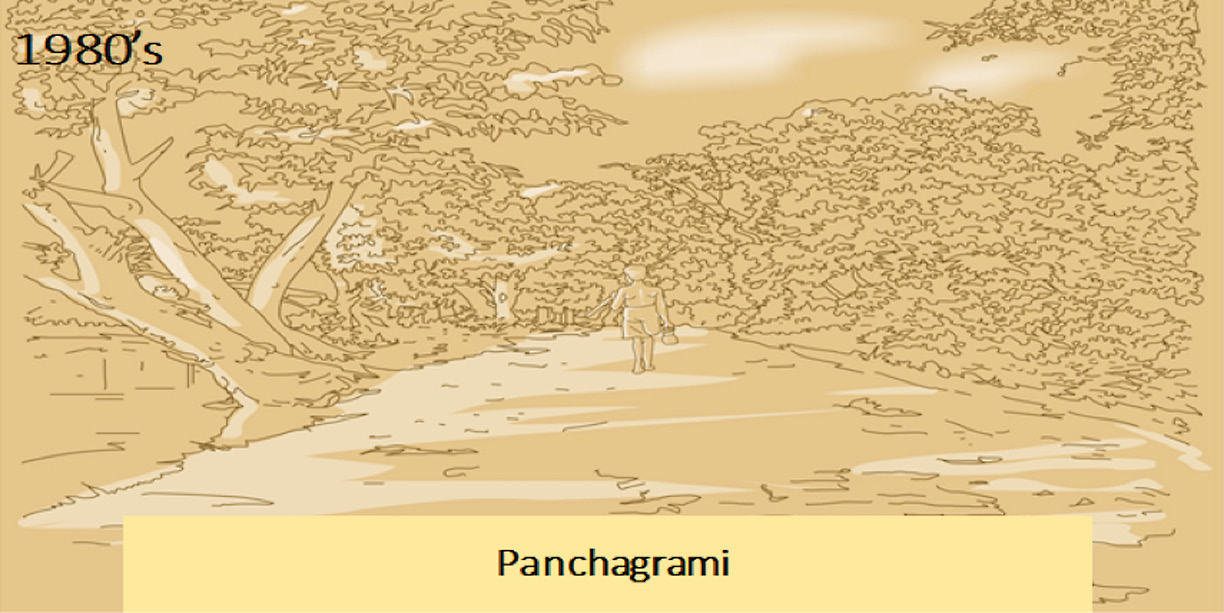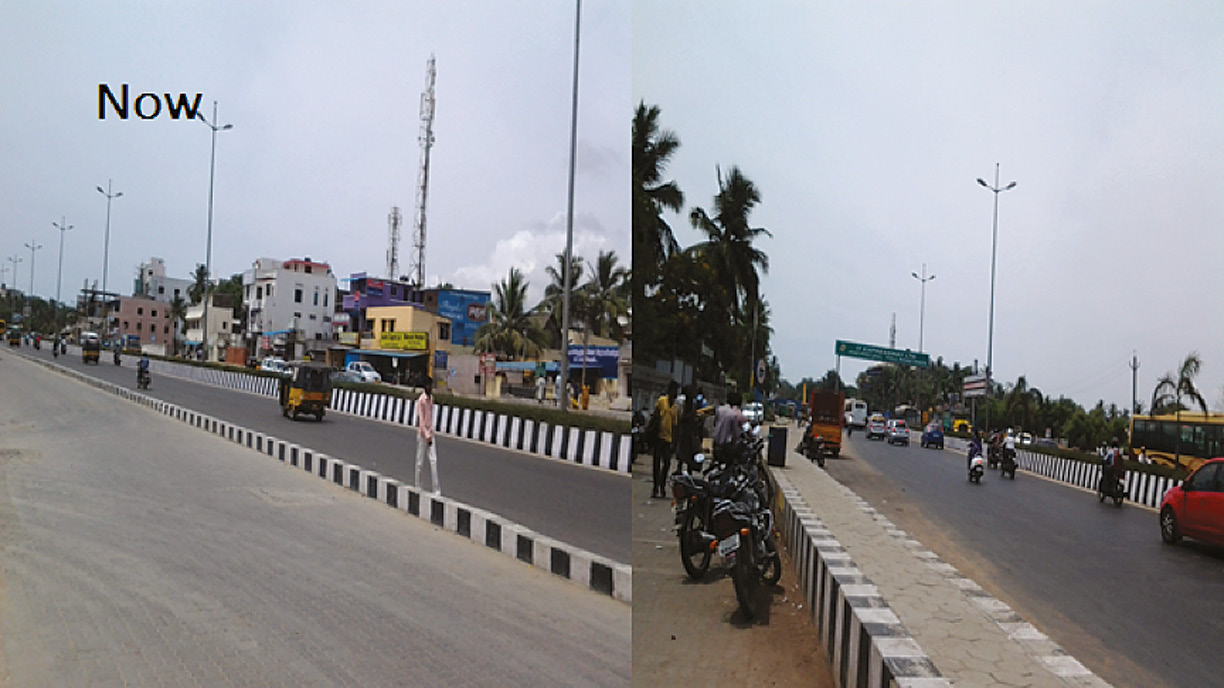Infrastructural development post 1990
The Information Technology sector started booming in India by the mid-1990s, just after the liberalisation of the Indian economy.35 Bangalore and Hyderabad were the first centres that saw huge growth and infrastructural developments related to this sector. Chennai was next in line, and the establishment of a well-known IT company in Panchagrami in the late 1990s laid the foundation for the area’s subsequent and rapid transformation. At first the grand entry of the IT sector into Chennai proved rather slow but steady. The first few IT companies that were established in the city were initially quite dispersed, until the year 2000, when Tidel Park, a huge Special Economic Zone catering specifically to IT companies, was planned and established by the Government of Tamil Nadu inside the city of Chennai. The establishment of the Tidel Park attracted several IT companies to Chennai. Early in the 2000s Indian-based multinational companies such as TCS (Tata Consultancy Services – the IT subsidiary of the Tata group of companies) set up a huge complex adjacent to the area’s new arterial road, which is now called the IT Highway.
As a result geographies that might merely have developed as outer suburbs of Chennai were designated for huge IT complexes. Panchagrami, being just outside Chennai, provided cheap land for easy occupation. This was why, in the year 2000, a Special Economic Zone that catered specifically to IT companies had been planned and established at Panchagrami by the Government of Tamil Nadu. As a sector-specific Special Economic Zone, this designation provided basic infrastructural facilities and the necessary tax deductions for IT/ITES36 companies. Potentially it may lead to the area becoming integrated into the city of Chennai in the near future.
Panchagrami houses not only these leading Indian IT/ITES companies, but also residential apartments, built or under construction as a housing investment option for these IT professionals, some of whom wish to live close to their workplaces. Following the growth of residential complexes catering to the IT population, a number of well-known private schools now work in tandem with housing construction companies to set up private schools for the children of these IT workers. Several small-time traders local to this area, as well as others who are newcomers, have also set up their businesses and shops to cater to this population.
Aerial view snapshots showing the infrastructural changes in Panchagrami over the last decade are provided below (Figs 1.2, 1.3 and 1.4).





